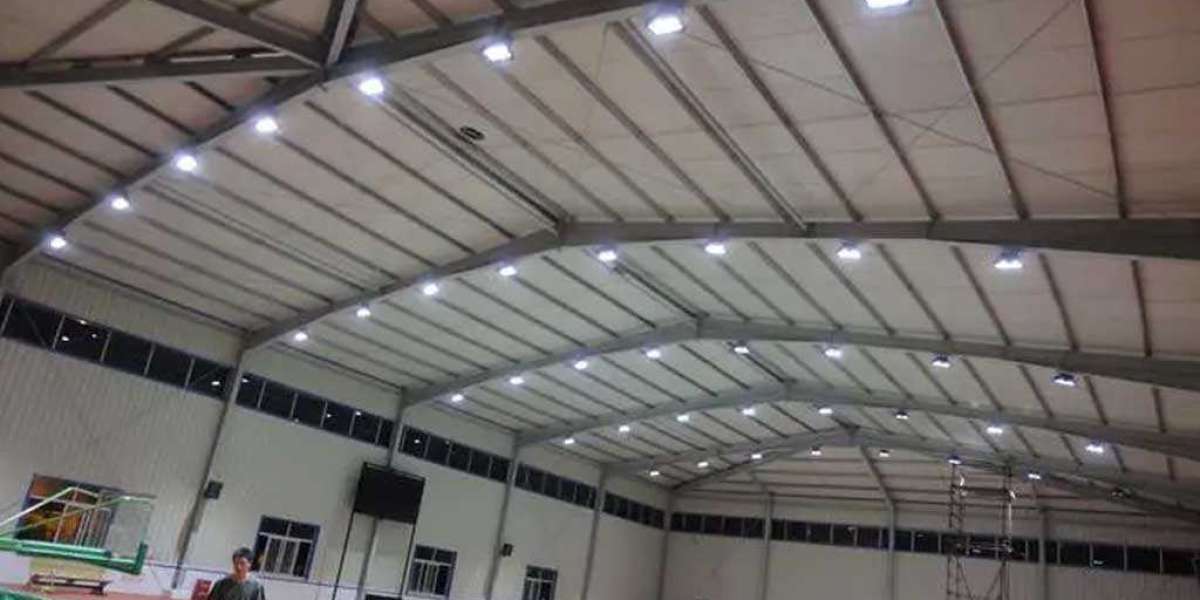Most of the cold regions in China are located in high latitudes, with cold climate and large temperature difference, which brings new challenges to the application of LED road lighting products. On the other hand, the average daily lighting time in most cold regions is longer than the domestic average, so the lighting power consumption is also higher than the domestic average. Therefore, the geographical characteristics of short days and long nights have brought more demand for LED lighting applications. Overall, the application of LED lighting products has both challenges and opportunities.
With the rapid development of LED lighting technology, in many domestic cities, there are already many LED street lights for road lighting. Especially after the luminous efficiency of high-power LED devices exceeds 100lm/W, the development trend of LED street lamps as road lighting has been generally recognized. In 2009, several cities in China organized the evaluation and testing of LED road lighting products. Most LED street lighting products have made significant progress in key technical indicators such as light distribution curves and system light efficiency. etc. have met the requirements of relevant standards and norms.
Although the technical level of LED street lamps has developed rapidly, most LED street lamp manufacturers have ignored the special technical requirements in the cold application environment during the product development process. A common misconception is that the application of LEDs in cold regions is conducive to heat dissipation and is not prone to failure. As everyone knows, in the cold application environment, there are more stringent technical requirements for LED street lamps, mainly in the following two aspects: First, the temperature in cold areas is low, and the temperature difference is large, and the sudden change of thermal shock and long-term low-temperature operation are harmful to the device. There are stricter quality requirements. Second, LED street lights used in cold areas must consider precautions to prevent ice condensation.
In view of the above reasons, the promotion and application of LED street lamps in cold regions needs to solve the following key technical problems.
1. The temperature change of thermal shock may cause the failure of LED devices
After the LED chip is packaged, it is a solid device, and there is a mismatch of expansion coefficients between the chip, silica gel (or resin), metal bracket and leads, and the impact of thermal shock due to large temperature differences in cold areas will make the During the process of temperature change, the expansion and contraction of silica gel will intensify, and the internal stress of the device will be too large, which will lead to increased displacement of LED wire bonding points, premature fatigue and damage of leads. At the same time, it will also cause the possibility of desoldering of the solder joints with poor bonding state, resulting in the desoldering of solder balls and chip electrodes, and even the failure phenomenon of delamination and detachment of LED chips.
There are hundreds of LED devices used in an LED street lamp, and a series-based hybrid configuration is usually used. If one LED fails, it will cause multiple LEDs to fail. Therefore, LEDs used in cold areas Street lamps must first set reasonable packaging process parameters such as ultrasonic power, bonding pressure, bonding time, and bonding temperature according to the temperature change characteristics of the lamps in a specific use environment to ensure the reliability of each LED device in a low-temperature operating environment .
2. Reliability guarantee of low temperature operation of LED drive device
Another key technical challenge lies in the reliability of LED street lamp driving devices in low temperature operating environments. At present, most LED street light driving power supplies show different types of acclimatization in cold and low temperature environments. The more prominent symptoms are the failure to start normally at low temperatures and the high failure rate in long-term low-temperature operating environments. The main reason for the above problems is that the device selection of the drive power supply in the design stage did not consider the reliability of the low-temperature working state, and the characteristics of some key components in the low-temperature environment change, resulting in the failure of the drive device to start or operate normally at low temperature, causing failures The specific reasons mainly include the following four aspects:
First, the carrier density and activity of the switching tube will be reduced under low temperature conditions, and the start point of overload protection will also be reduced; second, the electrolyte of the electrolytic capacitor freezes at low temperature and loses the capacitive effect (the ions in the solution at this time Only ion polarization exists), no load capacity; third, some types of optocoupler devices cannot work normally at low temperature; fourth, the input terminal prevents the thermistor from inrush current, and its resistance becomes larger at low temperature (3 to 5 times that of normal temperature), it will also cause the low temperature to fail to start normally.
The solution to the above problems is mainly to start with selecting devices with better temperature characteristics. For example, not all electrolytic capacitors cannot work at low temperatures. Generally speaking, electrolytic capacitors above 200V have poor low temperature resistance, while electrolytic capacitors below 160V can basically work normally at minus 40°C. The problem can be solved by using low-voltage electrolysis in series. The adjustment of device selection may slightly increase the cost of the driving device, but it is negligible from the perspective of the overall cost of LED street lamps. Considering the factors of improving reliability and reducing maintenance costs, this design adjustment is very necessary and cost-effective.
3. Protective measures against ice condensation hazards of LED street lamps
One of the problems that is easily overlooked in the promotion and application of street lamps in cold areas is that due to the accumulation of ice and snow on the surface of lamps and lanterns, the ice formed after being heated and melted, once formed, will cause a very large safety hazard to vehicles and pedestrians. Especially for LED street lamps, since the lamp shells are generally made of aluminum, the aluminum oxide on the surface is a hydrophilic material, which is more prone to ice condensation. In 2008, a large-scale snow disaster in southern China caused a large amount of ice condensation on the high-voltage wires on the aluminum surface, which collapsed and damaged a large number of power facilities. The consequences of this disaster are not only caused by the climate, the high-voltage cables on the surface of alumina are also an important incentive because of the hydrophilic material. As it affects the safety of road traffic, preventing ice condensation is a safety measure that must be taken into account when LED street lights are used in cold regions.
In order to solve this key technology, we analyzed the reasons why water freezes on the surface of the object and the reason why ice can firmly adhere to the surface of the object through microscopic imaging analysis of the surface of the ice-covered object. The experimental results found that only using materials with excellent hydrophobic properties is not ideal for preventing ice from condensing, and even water can freeze very firmly on the surface of some materials. The test results show that: ice can adhere to the surface of any object; cracks and depressions on the surface of the object are another main reason why ice can firmly adhere to the surface of the object; materials with good hydrophobic properties can delay the process of freezing process, but cannot prevent the formation of ice.
In order to compare the ability of different materials to prevent ice from condensing more accurately, we have studied the internal relationship between the surface structure, surface physical properties and icing of different objects from different angles, including: structural shape and icing, structural material and icing , surface finish and icing, surface rigidity and flexibility and icing. The research results show that the components with simple shape structure, compact structure, waterproof surface and excellent hydrophobic performance are not prone to ice condensation.
Based on this test data, we have set up LED street lamps with different appearances and shell materials in winter for several consecutive years. Through experiments, we found that: all lamps have a smooth, smooth, and flat appearance; there is no ice, snow or water accumulation load-bearing structure; LED street lights with excellent hydrophobic properties will not produce ice condensation.
Most of the cold regions in China are located in high latitudes, with cold climate and large temperature difference, which brings new challenges to the application of LED road lighting products. On the other hand, the average daily lighting time in most cold regions is longer than the domestic average, so the lighting power consumption is also higher than the domestic average.








